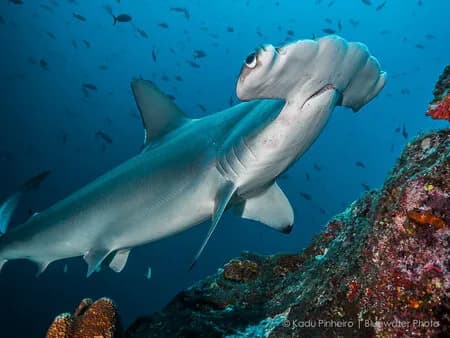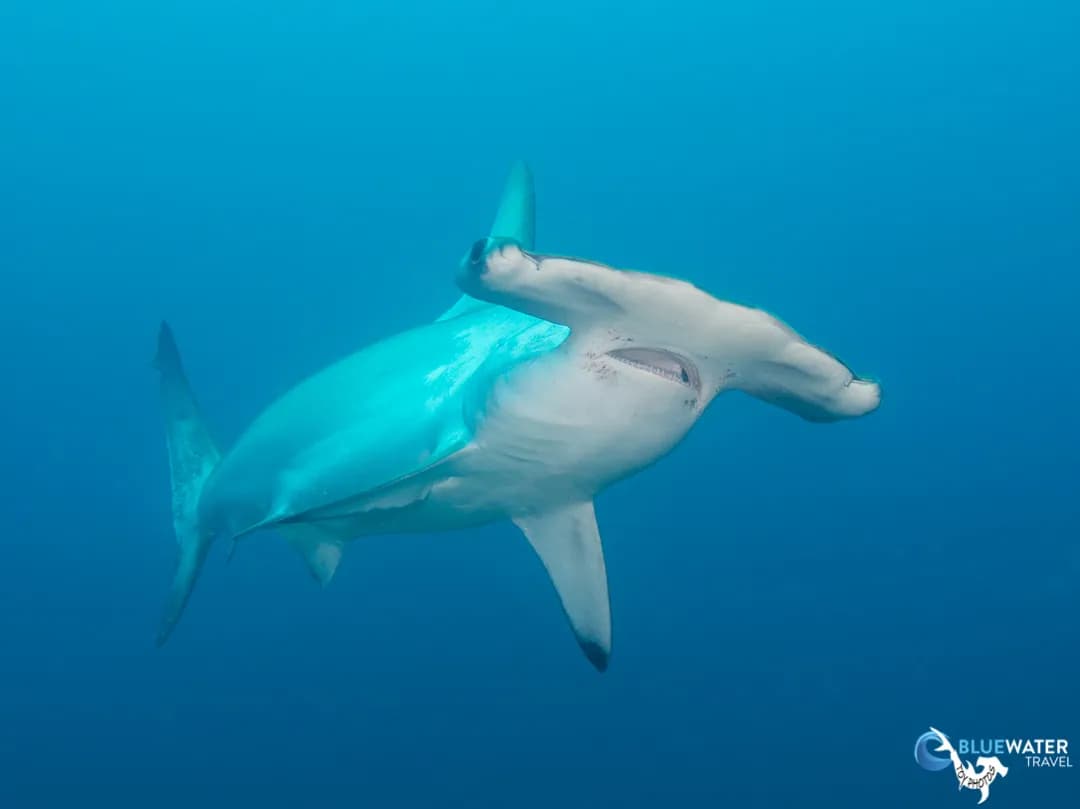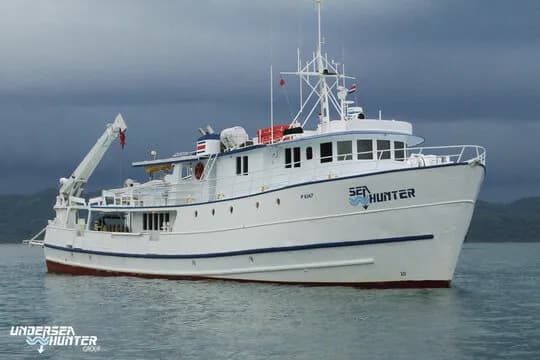
Diving in Costa Rica unveils vibrant marine life, including manta rays, whale sharks, and colorful coral reefs. Explore both Pacific and Caribbean coasts, where biodiversity thrives in warm, clear waters.
Scuba diving Costa Rica offers unique opportunities for divers of all experience levels. Both above and below the water, Costa Rica, translated as rich coast in Spanish, is known for its lush tropical forests and abundant wildlife. Located in Central America, the country occupies a narrow strip of volcanic land squeezed between the Pacific Ocean and the southern Caribbean Sea. The region's tropical climate and variety of habitats encourage some of the richest biodiversity in the world, including several rare and endangered species.
On Costa Rica's west coast, nutrient-rich upwellings and Pacific Ocean currents entice big pelagic fish and mammals close to the shore, with islands such as the Catalinas and the Bat Islands offering some exciting day-trip opportunities for Costa Rica scuba diving. Also, 340 miles further offshore, Costa Rica's flagship dive location, Cocos Island, is known globally as a fantastic hammerhead shark destination.
On the east coast, vibrant Caribbean reefs hide protected sites that are yet to be fully explored. A relaxing alternative to the west coast's big ocean diving, Costa Rica's Caribbean sites offer a plethora of tropical marine life and are perfect for beginners and snorkelers.
Here are some of the best places to dive in Costa Rica.
On par with the Galapagos and Socorro Islands, remote Cocos Island National Park is a UNESCO World Heritage Centre and a mecca for all things sharky. Diving here typically wouldn't be described as pretty, as there is virtually no colorful coral and therefore none of the associated vibrant reef species. But don’t be fooled - the waters around Cocos are some of the richest in the world. Pacific Ocean currents converge to bring all manner of shark species and a myriad of other pelagics to the island. Huge walls of schooling hammerheads are the big-ticket attraction here, with divers traveling from all over to photograph them in their hundreds.
Find out more about diving Cocos Island.
Situated midway along Costa Rica's Pacific Coast, the Catalina Islands lie between two and 15 miles offshore and are one of the most popular locations for scuba diving in Costa Rica. These rocky volcanic outcrops sport crystal clear waters and some fascinating underwater topography. Large caves and natural arches covered in bright corals are home to a variety of marine life including turtles, reef sharks, and dozens of rays, including mobula, devil, and the massive Pacific manta ray. Scuba diving Catalina Islands is an exciting introduction to Costa Rica's Pacific coast.
A marine protected area, the Bat Islands are located off the very northwest coast of Costa Rica and are around a 50-minute boat ride from the mainland. Divers will find vast shoals of many different fish species, as well as schooling devil rays, manta rays, and the huge bull sharks that the islands are famed for. The best-known site for scuba diving Bat Islands is Big Scare, where bull sharks as big as 23ft have been known to cruise the outermost islands' steep walls. Strong currents and depths over 100ft mean this Bat Island dive site is not for the faint-hearted.
Located off the southeastern edge of the Nicoya Peninsula, this small group of protected islands boasts a diversity of dive sites including some fascinating underwater formations at Canones (Canyons) and El Laberinto (The Labyrinth), exciting drift diving at Bye Bye Reef, and three wrecks all within recreational limits. The Franklin Chang Diaz and Colonel Alfonso Mong were both Coastguard ships that are easily accessible to divers of all abilities, while the Caroline Star sits in 98ft of water and is home to a good number of reef sharks. The waters around Tortuga are full of life and perfect for snorkelers and novice divers looking to explore scuba diving in Costa Rica.
Costa Rica’s southern Osa Peninsula boasts some unique diving spots around the Cano Island Biological Reserve. The area’s protected status means there are only five official Cano Island dive locations, allowing 10 divers in the water at any one time. El Bajo del Diablo (Devil's Rock) is a great spot to catch a glimpse of manta rays, bull sharks, and nurse sharks between the site's huge rocky pinnacles, peaks, and canyons. Paraiso (Paradise) is a volcanic lava formation where blue and gold snappers congregate in their thousands, watched by circling barracuda looking for their next meal. Scuba diving Cano Island is a unique experience not to be missed.
Costa Rica is a great eco-tourism destination and the country’s west coast is home to several popular resort areas. Many of the inshore Pacific dive sites can be reached by day-trip boats from towns such as Tamarindo, Playa Potrero, Jaco, and Puntarenas. The country's east coast is less developed, and visitors will find relaxed hideaways and unspoiled beaches. However, this goes hand-in-hand with a less established dive infrastructure, and some planning is required for diving these frontier sites.
Costa Rica is easily accessed from the US via two international airports: Juan Santamaria International Airport (SJO) and Daniel Oduber Quiros International Airport (LIR). Most flights arrive at the former, and this is the airport to use for trips to Cocos Island. There are also some direct flights from Europe.
Costa Rica is one of the top nature destinations in the world. There are excellent opportunities to see monkeys, toucans, brilliantly colored tree frogs, parrots, sloths, and many other birds and animals. Adrenaline junkies can take part in white-water rafting or surfing, and the country’s volcanoes feed relaxing hot springs and act as amazing motivation for tourists to take scenic hikes. Costa Rica is small, easy to travel around, and relatively safe.

Booking with us is free
Trusted by 10,000+ Divers worldwide
Booking with us is free
Trusted by 10,000+ Divers worldwide
Explore Costa Rica

